History

 On February 15, 1933, following his return from a fishing trip in the Bahamas, President Franklin Delano Roosevelt was met by a large crowd of thousands of people. The crown was so excited to see the president, but they soon found themselves in the middle of a terrifying situation. Suddenly, before their eyes shooting began. Giuseppi Zangara, an anarchist gunman opened fire, in an attempt to assassinate President Elect Franklin D Roosevelt. Zangara shouted, “Too many people are starving!” Of course, the driving force behind the attack was the Great Depression. People were starving, jobs had been lost, banks were going under, and true depression had set in. Desperation was the next step.
On February 15, 1933, following his return from a fishing trip in the Bahamas, President Franklin Delano Roosevelt was met by a large crowd of thousands of people. The crown was so excited to see the president, but they soon found themselves in the middle of a terrifying situation. Suddenly, before their eyes shooting began. Giuseppi Zangara, an anarchist gunman opened fire, in an attempt to assassinate President Elect Franklin D Roosevelt. Zangara shouted, “Too many people are starving!” Of course, the driving force behind the attack was the Great Depression. People were starving, jobs had been lost, banks were going under, and true depression had set in. Desperation was the next step.
President Roosevelt had just delivered a speech in Miami’s Bayfront Park from the back seat of his open touring car when Zangara opened fire with six rounds. While Zangara missed the president, five people were hit. One of those hit was the mayor of Chicago, Anton Cermak, who was also in attendance. The mayor received a mortal stomach wound in the attack. While every attempt possible was used to try to save the mayor’s life, he later died of his wounds. Four other bystanders were also wounded. One of them, a woman, is was not expected to recover.
Thousands of people witnessed the shooting, which occurred in a dense crowd at Biscayne park on the Miami water front. The people acted quickly. A woman named Mrs W F Cross, of Miami was the first to seize the assassin’s gun. Zangara was quickly captured after that and people in the crowd began to beat him severely. The men that had tackled the assailant, might have beaten him to death, if Roosevelt had not intervened, telling the crowd to leave justice to the authorities. At police headquarters he was found to be of maniacal anarchistic tendencies. He ranted, “I like Roosevelt, all right, but I don’t like presidents.” President Roosevelt, who had stayed to speak to Mayor Cermak after the speech, immediately got Cermak into the Presidential Limousine and rushed him to the hospital. Cermak told the president that he was glad it was him and not the president. Noble words from a man who was about to die. Mayor Cermak, who did not lose consciousness during any of the time prior to being put on the operating table, was wounded by a single bullet which entered his back just above the right kidney.
For a time there were reports that the gunman might have been a Chicago gangster sent down here to murder 
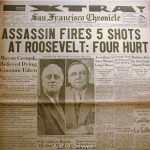 Mayor Cermak, but the subsequent developments showed that was not the case. Zangara was initially tried for attempted murder and sentenced to 80 years in prison, but when Mayor Cermak later died of his wounds, Zangara was retried and sentenced to death. Zangara died on the electric chair on March 20, 1933. I find myself amazed that his death came so quickly after his conviction. Most often it takes years to put someone to death. Nevertheless, just over a month later, the execution took place. At least that one time, justice was swift.
Mayor Cermak, but the subsequent developments showed that was not the case. Zangara was initially tried for attempted murder and sentenced to 80 years in prison, but when Mayor Cermak later died of his wounds, Zangara was retried and sentenced to death. Zangara died on the electric chair on March 20, 1933. I find myself amazed that his death came so quickly after his conviction. Most often it takes years to put someone to death. Nevertheless, just over a month later, the execution took place. At least that one time, justice was swift.
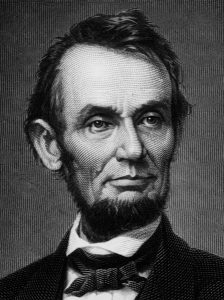 With Abraham Lincoln’s birthday just behind us…he was born on February 12, 1809. Most of us know that Lincoln had no formal education. We know that he gave amazing speeches and that he freed the slaves. We also know that he was assassinated, but there are a number of other Lincoln Facts that I didn’t know, and maybe you didn’t either. One sad fact is that Lincoln lost his mother at the tender age of 9 years old, when she drank poison milk. She wasn’t poisoned, but it turns out that many people died of a strange “milk sickness” that was caused by a cow eating a “poisonous to humans” plant called White Snakeroot. I’m sure it was a horrible time for Lincoln, but his father remarried, and the widow, Sarah Bush Johnston was a kind woman, who got along well with her step-son.
With Abraham Lincoln’s birthday just behind us…he was born on February 12, 1809. Most of us know that Lincoln had no formal education. We know that he gave amazing speeches and that he freed the slaves. We also know that he was assassinated, but there are a number of other Lincoln Facts that I didn’t know, and maybe you didn’t either. One sad fact is that Lincoln lost his mother at the tender age of 9 years old, when she drank poison milk. She wasn’t poisoned, but it turns out that many people died of a strange “milk sickness” that was caused by a cow eating a “poisonous to humans” plant called White Snakeroot. I’m sure it was a horrible time for Lincoln, but his father remarried, and the widow, Sarah Bush Johnston was a kind woman, who got along well with her step-son.
At the age of 21, Abraham Lincoln became a champion wrestler. I don’t know how he would have fared in WWE, but then that is a lot of drama and show too. Nevertheless, he wrestled in approximately 300 matches, and only lost once. It is thought that his long legs helped him lock his opponent down. Lincoln reportedly talked a little smack in the ring too. According to Carl Sandburg’s biography of Lincoln, “Honest Abe once challenged an entire crowd of onlookers after dispatching an opponent: ‘I’m the big buck of this lick. If any of you want to try it, come on and whet your 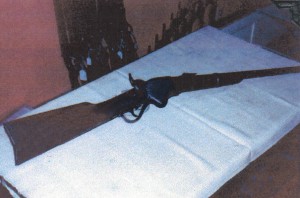 horns.’ There were no takers.” Lincoln’s grappling exploits earned him an “Outstanding American” honor in the National Wrestling Hall of Fame.
horns.’ There were no takers.” Lincoln’s grappling exploits earned him an “Outstanding American” honor in the National Wrestling Hall of Fame.
Lincoln is also the only president to have personally test-fired rifles outside the White House, including one by my ancestor, Christopher Spencer who was the inventor of the Spencer Repeating Rifle. When Spencer signed his new rifle up for adoption right after the Civil War broke out, it was not well received by the Department of War Ordnance, that felt soldiers would waste ammunition by firing too rapidly with repeating rifles. The unit was also more expensive than Springfield Model 1861 rifled musket in use at the time. Nevertheless, shortly after the famous Battle of Gettysburg, Spencer was able to gain an audience with President Abraham Lincoln, who invited him to a shooting match and demonstration of the weapon on the lawn of the White House. President Lincoln was so impressed with the weapon that he ordered General James Wolfe Ripley to adopt it for production. 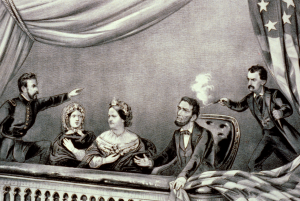 Unfortunately, Ripley disobeyed the order and continued to use the old single-shooters.
Unfortunately, Ripley disobeyed the order and continued to use the old single-shooters.
President Lincoln is also responsible for the safety of the presidents that followed him. Yes, there were failures, but without Lincoln’s decision to create the Secret Service on April 14, 1865, just hours before he was assassinated, many presidents in the future would not have had the quality of protection they did. The Secret Service did protect President Lincoln after his death, when grave robbers attempted to steal his body and hold it for a ransom of $200,000 and the release of one of their gang from prison. Their attempt was foiled by the Secret Service that President Lincoln had initiated.
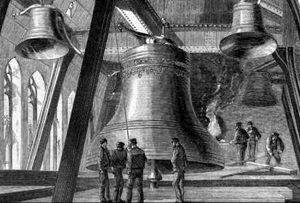 When you think of Big Ben, many of us think of a tower in London…or at least I did. The reality is that Big Ben isn’t the tower at all…it’s the bell. The tower is actually called the Elizabeth Tower…at least since 2012 when it was renamed that in honor of the current Queen Elizabeth. Prior to 2012, the tower was just called “the clock tower.” That was it’s official name, but it was nicknamed Saint Stephen’s tower. It’s funny that we can associate a specific name or idea to something, and have the whole thing totally wrong. The tower name is an interesting story, but that is not the only oddity when it comes to Big Ben.
When you think of Big Ben, many of us think of a tower in London…or at least I did. The reality is that Big Ben isn’t the tower at all…it’s the bell. The tower is actually called the Elizabeth Tower…at least since 2012 when it was renamed that in honor of the current Queen Elizabeth. Prior to 2012, the tower was just called “the clock tower.” That was it’s official name, but it was nicknamed Saint Stephen’s tower. It’s funny that we can associate a specific name or idea to something, and have the whole thing totally wrong. The tower name is an interesting story, but that is not the only oddity when it comes to Big Ben.
As interesting as that was to me, I find it even more interesting to find out that there is actually a prison in the tower. A third of the way, or 114 steps up inside the tower is the Prison Room, where MPs in breach of codes of conduct were imprisoned. The prison room was last used in 1880 when 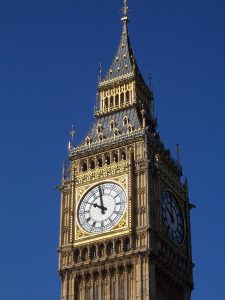 newly elected MP Charles Bradlaugh, who was an atheist, refused to swear allegiance to Queen Victoria on the Bible. He was kept in the prison room overnight. These days there is a pub named after him in Northampton. I’m not sure how many more people were imprisoned there, but it is certainly a strange use for a clock tower.
newly elected MP Charles Bradlaugh, who was an atheist, refused to swear allegiance to Queen Victoria on the Bible. He was kept in the prison room overnight. These days there is a pub named after him in Northampton. I’m not sure how many more people were imprisoned there, but it is certainly a strange use for a clock tower.
There are 334 steps over 11 floors up to the belfry…399 up to the lantern of the Elizabeth Tower. Each clock face measures 23 feet in diameter. The minute hand on each clock face is 14 feet long, and the hour hand is 9 feet long. The main bell weighs 13.7 tons and is 9 feet in diameter. There are four quarter bells that are smaller. These have different dimensions to enable them to hit different notes. At the top of the tower is an extra light called the Ayrton Light. It was installed so Queen Victoria could see when the members of parliament were sitting after hours.
The current bell is not the original bell. The original bell was famously cast at Whitechapel Bell Foundry. The contract to create the bell went to a company called Warners of Norton in Stockton-on-Tees. A 16.5 ton bell was created and delivered to London before the clock tower was ready. For several months, the bell was tested outside the tower. It was working fine until the man who designed it, Edmund Beckett Denison, decided he  wanted it louder so added a much larger hammer. Three weeks later the bell broke. It was sent to Whitechapel Bell Foundry in pieces and melted down to create the new 13.5 ton bell. Once complete, it took 32 hours to winch it up the tower. Just two months after the bell named Big Ben first went into service in 1859, it was cracked. The hammer that was installed to ring the bell was roughly twice the size it should have been for a bell of that size. Nevertheless, the damage was done. The bell remains flawed to this day. A lighter hammer was fitted, and the bell was rotated slightly so that the hammer no longer hits the cracked section. The clock uses penny weights to keep the time accurate.
wanted it louder so added a much larger hammer. Three weeks later the bell broke. It was sent to Whitechapel Bell Foundry in pieces and melted down to create the new 13.5 ton bell. Once complete, it took 32 hours to winch it up the tower. Just two months after the bell named Big Ben first went into service in 1859, it was cracked. The hammer that was installed to ring the bell was roughly twice the size it should have been for a bell of that size. Nevertheless, the damage was done. The bell remains flawed to this day. A lighter hammer was fitted, and the bell was rotated slightly so that the hammer no longer hits the cracked section. The clock uses penny weights to keep the time accurate.
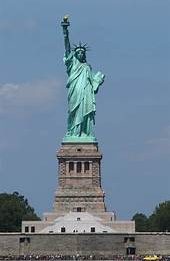 I have been to and inside the Statue of Liberty, and it is a place I’ll never forget. I was a teenager at the time, but I can still vividly picture the inside, as well as the outside. I think the thing that most stuck in my head is that to go up into the statue was a rather tight corridor. The arm was closed when we were there, but we didn’t really know why. For a time, especially after 9-11, no one was allowed to go into the Statue of Liberty at all, for fear of another terrorist attack.
I have been to and inside the Statue of Liberty, and it is a place I’ll never forget. I was a teenager at the time, but I can still vividly picture the inside, as well as the outside. I think the thing that most stuck in my head is that to go up into the statue was a rather tight corridor. The arm was closed when we were there, but we didn’t really know why. For a time, especially after 9-11, no one was allowed to go into the Statue of Liberty at all, for fear of another terrorist attack.
Prior to the 9-11 concerns, the Statue of Liberty was examined by French and American engineers for structural stability in 1982, as part of the planning for its centennial in 1986. Following the examination, it was announced that the statue was in need of considerable restoration. Careful examination had revealed that the right arm 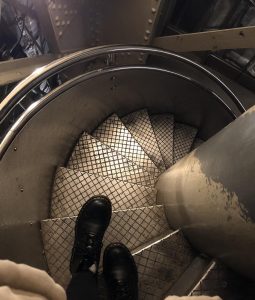 had been improperly attached to the main structure. It was swaying more and more when strong winds blew and there was a significant risk of structural failure. This is information that I’m thankful I didn’t have when I went up into the statue in 1973. I recall being disappointed that we couldn’t go up in the arm then, but apparently they knew of the issues even then. Of further concern, the head had been installed 2 feet off center, and one of the rays was wearing a hole in the right arm when the statue moved in the wind. All the problems warranted the repairs done in 1984. She also got a nose job and her arm was shifted slightly to a better position. This information, though not well know, was really bad news, when you think about it. The statue had been standing in this place for 96 years by the time these flaws were discovered. Imagine what could have happened, especially with the arm improperly
had been improperly attached to the main structure. It was swaying more and more when strong winds blew and there was a significant risk of structural failure. This is information that I’m thankful I didn’t have when I went up into the statue in 1973. I recall being disappointed that we couldn’t go up in the arm then, but apparently they knew of the issues even then. Of further concern, the head had been installed 2 feet off center, and one of the rays was wearing a hole in the right arm when the statue moved in the wind. All the problems warranted the repairs done in 1984. She also got a nose job and her arm was shifted slightly to a better position. This information, though not well know, was really bad news, when you think about it. The statue had been standing in this place for 96 years by the time these flaws were discovered. Imagine what could have happened, especially with the arm improperly 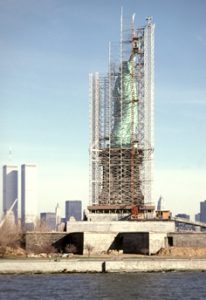 installed. The armature structure was badly corroded, and about two percent of the exterior plates needed to be replaced. Although problems with the armature had been recognized as early as 1936, when cast iron replacements for some of the bars had been installed, much of the corrosion had been hidden by layers of paint applied over the years. The whole statue was literally a ticking time bomb. Following the repairs, the statue would be much safer and could again be used, but that was not the end of her secrets.
installed. The armature structure was badly corroded, and about two percent of the exterior plates needed to be replaced. Although problems with the armature had been recognized as early as 1936, when cast iron replacements for some of the bars had been installed, much of the corrosion had been hidden by layers of paint applied over the years. The whole statue was literally a ticking time bomb. Following the repairs, the statue would be much safer and could again be used, but that was not the end of her secrets.
Most people think that the Statue of Liberty was a gift from the nation of France, and while it did come from France, it was actually partly a gift from the manufacturer in France (not the French nation). on top of that, Americans had to pay for the pedestal and partly contributed to the cost of the statue itself. Fundraisers were held in Boston and Philadelphia, in order to win the right to have the statue, but in the end, it went to New York. I’m sure many people who helped with the fundraising were very disappointed. This was another secret of the Statue of Liberty that I did not know.
 Shergar was a racehorse with the possibility for a great future as a stud horse following his 1981 retirement, but that future was cut short on February 8, 1983, when he was stolen. Shergar was born on March 3, 1978. He was an Irish-bred, British-trained thoroughbred racehorse. Shergar’s owner, The Aga Khan, sent the horse for training in Britain in 1979 and 1980. Shergar began his first season of racing in September 1980 and ran two races that year. He won one and came second in the other. Then, in 1981 he ran in six races, winning five of them. He was an amazing horse. In June that year, he won the 202nd Epsom Derby by ten lengths, which is the longest winning margin in the race’s history. Three weeks later he won the Irish Sweeps Derby by four lengths; a month after that he won the King George VI and Queen Elizabeth Stakes by four lengths. In his final race of the year he came in fourth, and the Aga Khan took the decision to retire him to stud in Ireland. I suppose that like many sports, there is a short window of opportunity with a racehorse, although it seems to me that Shergar had a very short career, but a promising future in stud service to breed racehorses.
Shergar was a racehorse with the possibility for a great future as a stud horse following his 1981 retirement, but that future was cut short on February 8, 1983, when he was stolen. Shergar was born on March 3, 1978. He was an Irish-bred, British-trained thoroughbred racehorse. Shergar’s owner, The Aga Khan, sent the horse for training in Britain in 1979 and 1980. Shergar began his first season of racing in September 1980 and ran two races that year. He won one and came second in the other. Then, in 1981 he ran in six races, winning five of them. He was an amazing horse. In June that year, he won the 202nd Epsom Derby by ten lengths, which is the longest winning margin in the race’s history. Three weeks later he won the Irish Sweeps Derby by four lengths; a month after that he won the King George VI and Queen Elizabeth Stakes by four lengths. In his final race of the year he came in fourth, and the Aga Khan took the decision to retire him to stud in Ireland. I suppose that like many sports, there is a short window of opportunity with a racehorse, although it seems to me that Shergar had a very short career, but a promising future in stud service to breed racehorses.
In 1981 he was retired to what was then the Ballymany Stud in County Kildare, Ireland. Then, in 1983 he was stolen from the stud, and a ransom of £2 million was demanded. The ransom was not paid, and soon the negotiations were broken off by the thieves. In 1999 a confidential informant, formerly in the Provisional Irish Republican Army (IRA), stated that they stole the horse. The IRA has never admitted any role in the theft. After Shergar’s Epsom Derby win, the Aga Khan sold 40 shares in the horse, valuing it at £10 million. Retaining six shares, he created an owners’ syndicate with the remaining 34 members. Shergar was stolen from the Aga Khan’s stud farm by an armed gang on February 8, 1983. Negotiations were conducted with the thieves, but the gang broke off all communication after four days when the syndicate did not accept as truth the proof they provided that the horse was still alive. In 1999 Sean O’Callaghan, a former member of the IRA and probably the confidential informant, published details of the theft and stated that it was an IRA operation to raise money for arms. He said that very soon after the theft, Shergar panicked and damaged his leg, which led to him being killed by the gang. An investigation by The Sunday Telegraph concluded that the horse was shot four days after the theft, or right at the time they stopped negotiations.
Whatever happened to Shergar, there have never been any arrests in the case. Shergar’s body has never been recovered or identified. Some people think it is likely that the body was buried near Aughnasheelin, near Ballinamore, County Leitrim. The Shergar Cup was inaugurated in 1999 in honor of Shergar. His story has been made into movies, several books, and two documentaries. Shergar was a great horse, and should have been allowed to live out his life, but people who only wanted to make money to to buy arms, in an effort to bring mass destruction, couldn’t allow this beautiful horse to live. Anytime a horse is stolen, it is traumatic for the horse. Their schedule is disrupted, they don’t know the people who are taking care of them now, and it is possible that care is not what it should be. The panic that happened to poor Shergar should never have happened. I have no doubt they killed that poor horse, but we will never know for sure.
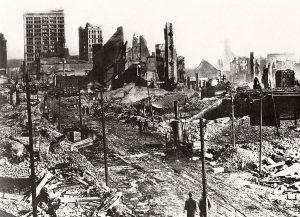 As disastrous fires go, the Great Baltimore Fire comes in historically as the third worst conflagration in an American city, surpassed only by the Great Chicago Fire of 1871, and the San Francisco Earthquake and Fire of 1906. There were other major urban disasters that were comparable in cost, but not fires. These were the Galveston Hurricane of 1900 and most recently, Hurricane Katrina that hit New Orleans and the Gulf of Mexico coast in August 2005.
As disastrous fires go, the Great Baltimore Fire comes in historically as the third worst conflagration in an American city, surpassed only by the Great Chicago Fire of 1871, and the San Francisco Earthquake and Fire of 1906. There were other major urban disasters that were comparable in cost, but not fires. These were the Galveston Hurricane of 1900 and most recently, Hurricane Katrina that hit New Orleans and the Gulf of Mexico coast in August 2005.
On February 7, 1904, a small fire was reported at the John Hurst and Company building on West German Street at Hopkins Place, The site is currently the Royal Farms Arena in the western part of downtown Baltimore. The fire started at about 10:48am, and quickly spread. It wasn’t long before the fire surpassed the ability of the city’s firefighting resources, and calls for help were telegraphed to other cities. By 1:30pm, units from Washington, DC were arriving on the Baltimore and Ohio Railroad at Camden Street Station. Officials decided to use a firebreak in an effort to halt the fires progression. They dynamited buildings around the existing fire. Unfortunately, this tactic was unsuccessful. The fire continued to rage and spread until it was finally brought under control about 5:00pm on February 8, 1904.
In the end, the fire engulfed a large portion of the city that evening. The culprit for starting the fire is believed to have been a discarded cigarette in the basement of the Hurst Building. When the fire was finally out after burning for 31 hours, an 80-block area of downtown Baltimore, stretching from the waterfront to Mount Vernon on Charles Street, had been destroyed. More than 1,500 buildings were completely leveled, and some 1,000 severely damaged, bringing property loss from the disaster to an estimated $100 million. No lives were lose in this disaster…miraculously, although some reports did claim one man died, but that was not confirmed. The fire raged from North Howard Street in the west and southwest, the flames spread north through the retail shopping area as far as Fayette Street and began moving eastward, pushed along by the prevailing winds. Amazingly, it narrowly missed the new 1900 Circuit Courthouse…now known as the Clarence M. Mitchell, Jr. Courthouse. The fire passed the historic Battle Monument Square from 1815 to 1827 at North Calvert Street, and the quarter-century-old  Baltimore City Hall of 1875 on Holliday Street; and finally spread further east to the Jones Falls stream which divided the downtown business district from the old East Baltimore tightly-packed residential neighborhoods of Jonestown…also known as Old Town and newly named Little Italy.” The fire burned as far south as the wharves and piers lining the north side of the old “Basin,” now the “Inner Harbor” of the Northwest Branch of the Baltimore Harbor and Patapsco River facing along Pratt Street. Also spared was Baltimore’s domed City Hall, built in 1867. The Great Baltimore Fire was the most destructive fire in the United States since the Great Chicago Fire of 1871, It destroyed most of the city and caused an estimated $200 million in property damage.
Baltimore City Hall of 1875 on Holliday Street; and finally spread further east to the Jones Falls stream which divided the downtown business district from the old East Baltimore tightly-packed residential neighborhoods of Jonestown…also known as Old Town and newly named Little Italy.” The fire burned as far south as the wharves and piers lining the north side of the old “Basin,” now the “Inner Harbor” of the Northwest Branch of the Baltimore Harbor and Patapsco River facing along Pratt Street. Also spared was Baltimore’s domed City Hall, built in 1867. The Great Baltimore Fire was the most destructive fire in the United States since the Great Chicago Fire of 1871, It destroyed most of the city and caused an estimated $200 million in property damage.
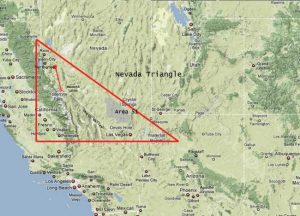
 I think we have all heard of the Bermuda Triangle, where planes and ships have mysteriously gone missing in the Atlantic Ocean for decades, but most people are not aware that there is a similar place in Alaska and one in Nevada. The Nevada Triangle lies in a region of the Sierra Nevada Mountains in Nevada and California. In that area, some 2,000 planes have been lost in the last 60 years. That may not seem significant, but when you break it down, it is about 3 crashes/disappearances a every month of those 60 years. The Nevada Triangle is more than 25,000 miles of mountain desert. It is a remotely populated area, and many of the crash sites have never found.
I think we have all heard of the Bermuda Triangle, where planes and ships have mysteriously gone missing in the Atlantic Ocean for decades, but most people are not aware that there is a similar place in Alaska and one in Nevada. The Nevada Triangle lies in a region of the Sierra Nevada Mountains in Nevada and California. In that area, some 2,000 planes have been lost in the last 60 years. That may not seem significant, but when you break it down, it is about 3 crashes/disappearances a every month of those 60 years. The Nevada Triangle is more than 25,000 miles of mountain desert. It is a remotely populated area, and many of the crash sites have never found.
The triangle location is roughly defined as spanning from Las Vegas, Nevada; to Fresno, California; to Reno, Nevada. Of course, notoriously located in this wilderness area is the mysterious, top-secret Area 51…adding to the mystery of these disappearances. Along with the dozens of conspiracy theories which include UFO’s and paranormal activity that surrounds the air force base, similar theories have long been considered regarding the Nevada Triangle. Throughout these many years, many of the missing planes were flown by experienced pilots and disappeared under mysterious circumstances, with the wreckage never found. I don’t buy into most conspiracy theories, and I don’t know what I think of this situation either, but when you look at the statistics an undeniable picture of strangeness does seem to present itself.
Probably one of the most famous cashes of our current time is that of record-setting aviator, sailor, and adventurer, Steve Fossett on September 3, 2007. Fossett, who was flying a single-engine Bellanca Super Decathlon over Nevada’s Great Basin Desert, took off and never returned. Search crews combed the area for a month, before the search was called off and on February 15, 2008, Fossett was declared dead. Then on September 29th, 2008, Fossett’s identification cards were discovered in the Sierra Nevada Mountains in California by a hiker. Of course, that reactivated the search, and a few days later, the crash site was discovered, located approximately 65 miles from where the aviator initially took off. Initially, no remains were found, but two bones were later recovered a half mile from the crash site which were found to have belonged to Steve Fossett. It is assumed that his body was carried of by wild animals, hence the scattered bones.
One of the earliest incidents of planes lost in the “Triangle” dates back 70 years when a B-24 bomber crashed in the Sierra Nevada mountains in 1943. The bomber, took off on December 5th, piloted by 2nd Lieutenant Willis Turvey and co-piloted by 2nd Lieutenant Robert M Hester. The plane carried four other crew members including 2nd Lieutenant William Thomas Cronin, serving as navigator; 2nd Lieutenant Ellis H Fish, bombardier; Sergeant Robert Bursey, engineer; and Sergeant Howard A Wandtke, radio operator. A routine night training mission, the plane took off from Fresno, California’s Hammer Field destined to Bakersfield, California to Tucson, and then was scheduled to return. The next day an extensive search mission began when nine B-24 Bombers were sent out to find the missing plane. The search was unsuccessful, and also brought about another mystery, when one of the search bombers went missing. On the morning of December 6, 1943, Squadron Commander Captain William Darden lifted off along with eight other B-24s. Captain Darden, his airplane, and remaining crew would not be seen again until 1955, at which point the Huntington Lake reservoir was drained for repairs to the dam. I suppose that all of the missing planes are somewhere, and might still be discovered someday, bit it is a vast area, and it is almost impossible to search all of it. Even with information concerning Captain Darden and his B-24, by survivors who bailed out at the captains orders, that the captain tried to land in a clearing that ended up being a half frozen lake, it still took twelve years to locate the plane.
The father of the original B-24’s co-pilot never gave up the search, although he was unsuccessful and died of a heart attack in 1959, about 14 years after the crash. One year after Clinton Hester passed away, the wreckage was found in July 1960 by to United States Geological Survey researchers who were working in a remote section of the High Sierra, west of LeConte Canyon in Sequoia and Kings Canyon National Parks. There, they found airplane wreckage in and near an unnamed lake. Later, Army investigators revealed the wreckage to be that of the first missing bomber piloted by 2nd Lieutenant Willis Turvey and co-piloted by 2nd Lieutenant Robert M. Hester. The lake is now known as Hester Lake.
It would seem that the Kings Canyon National Park area is a tough one to search, and seems to hold the key to may of the missing planes. As odd as some of these events sound, I find it hard to believe that they could have just disappeared. Still, I’m no expert in the matter, and these may not have been the only time something or someone just went missing. I am reminded of Enoch in the Bible, “And Enoch walked with God and disappeared because God took him.” Genesis 5:24. Whatever may have happened in these cases of missing planes, some of which we may never know, and some that may remain a mystery for years; the fact remains that this is a very difficult area to search, and so we really just don’t know. “Conspiracy theorists have long claimed the reason so many flights have disappeared is connected to the presence Area 51, where the US Air Force is known to test secret prototype aircraft. But, many experts believe the disappearances can be attributed to the areas geography and atmospheric conditions. The Sierra Nevada mountains run perpendicular to the Jet Stream, or high Pacific winds, which conspire with the sheer, high altitude peaks and wedge-shaped range to create volatile, unpredictable winds and downdrafts. This weather phenomenon is sometimes called the “Mountain 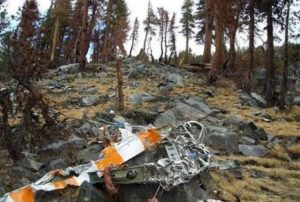
 Wave” where planes are seemingly ripped from the air and crashed to the ground.” Of course, many experts believe they are pilot error, inexperienced pilots getting caught in turbulence, and the disorienting mountain terrain. I suppose that is possible, but that is a lot of cases over the past 60 years. Then again, not every plane that flies over the area disappears either, so who am I to say.
Wave” where planes are seemingly ripped from the air and crashed to the ground.” Of course, many experts believe they are pilot error, inexperienced pilots getting caught in turbulence, and the disorienting mountain terrain. I suppose that is possible, but that is a lot of cases over the past 60 years. Then again, not every plane that flies over the area disappears either, so who am I to say.
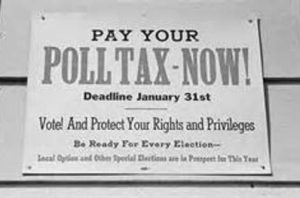 Those of us living today, might not have heard of a thing called a Poll Tax, but it was a very real thing, and with the election process just behind us, I think this might be something worth hearing. The Poll Tax was also known as a head tax or a capitation tax (meaning a tax for a head count). When I first thought about this particular tax, I thought well, maybe that kind of a tax could have ensured a fair election, but really, the opposite is true. While the head tax was considered an important source of revenue for many governments, from ancient times until the 19th century, in the United States at least; voting poll taxes (whose payment was a precondition to voting in an election) have been used to disenfranchise impoverished and minority voters (especially under Reconstruction). I find that absolutely unbelievable. In this nation in most election years, we have to practically beg people to get out and vote. Charging them money for it would all but insure a poor turnout. It would also insure that only those well enough off to be able to “throw money” at an election would be able to vote. Now that is truly appalling.
Those of us living today, might not have heard of a thing called a Poll Tax, but it was a very real thing, and with the election process just behind us, I think this might be something worth hearing. The Poll Tax was also known as a head tax or a capitation tax (meaning a tax for a head count). When I first thought about this particular tax, I thought well, maybe that kind of a tax could have ensured a fair election, but really, the opposite is true. While the head tax was considered an important source of revenue for many governments, from ancient times until the 19th century, in the United States at least; voting poll taxes (whose payment was a precondition to voting in an election) have been used to disenfranchise impoverished and minority voters (especially under Reconstruction). I find that absolutely unbelievable. In this nation in most election years, we have to practically beg people to get out and vote. Charging them money for it would all but insure a poor turnout. It would also insure that only those well enough off to be able to “throw money” at an election would be able to vote. Now that is truly appalling.
It is my understanding that originally the “poll tax” or maybe more correctly, head tax was not about an election, but more like the census. It even has Biblical roots…Mary and Joseph went to Bethlehem to be counted and pay their taxes to Caesar Augustus. This was the first of the head taxes. The tax might have been originally a way to bring in revenue. The poll taxes that followed, in most cases, were purely discriminatory. 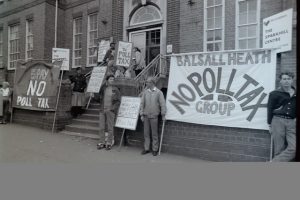 These latter poll taxes ensured that only wealthy people got the chance to cast their vote…thereby putting in candidates that those in charge wanted.
These latter poll taxes ensured that only wealthy people got the chance to cast their vote…thereby putting in candidates that those in charge wanted.
While the Poll Tax might have been a way to bring in money for governments, it seems to me that it could also be a way to make sure that the people vote for the candidate the government wants. Those who might have voted for change to improve the situation in their own neighborhoods, towns, cities, and states, were usually the poorer people, but they couldn’t vote for someone who could help, because they didn’t have the money. Many of these people were minorities. Head taxes were important sources of revenue for many governments from ancient times until the 19th century. In the United Kingdom, poll taxes were levied by the governments of John of Gaunt in the 14th century, Charles II in the 17th and Margaret Thatcher in the 20th century. By their very nature, poll taxes are considered very regressive taxes, are usually very unpopular and have been implicated in many uprisings.
On August 27, 1962, the Twenty-fourth Amendment (Amendment XXIV) of the United States Constitution was proposed. The Twenty-fourth Amendment prohibits both Congress and the states from conditioning the right to vote in federal elections on payment of a poll tax or other types of tax. The amendment was ratified by the states on January 23, 1964. When the 24th Amendment was ratified in 1964, five states still retained a poll tax. Those states were Alabama, Arkansas, Mississippi, Texas, and Virginia. These states continues the practice  even though the amendment prohibited requiring a poll tax for voters in federal elections. Finally, in 1966 the US Supreme Court ruled 6–3 in Harper v. Virginia Board of Elections, that poll taxes for any level of elections were unconstitutional. The ruling stated that the poll tax violated the Equal Protection Clause of the Fourteenth Amendment. Further litigation related to potential discriminatory effects of voter registration requirements has generally been based on application of this clause. Those of us living today, might not have heard of a thing called a Poll Tax, but it was a very real thing, and with the election process just behind us, I think this might be something worth hearing. The Poll Tax was also known as a head tax or a capitation tax (meaning a tax for a head count).
even though the amendment prohibited requiring a poll tax for voters in federal elections. Finally, in 1966 the US Supreme Court ruled 6–3 in Harper v. Virginia Board of Elections, that poll taxes for any level of elections were unconstitutional. The ruling stated that the poll tax violated the Equal Protection Clause of the Fourteenth Amendment. Further litigation related to potential discriminatory effects of voter registration requirements has generally been based on application of this clause. Those of us living today, might not have heard of a thing called a Poll Tax, but it was a very real thing, and with the election process just behind us, I think this might be something worth hearing. The Poll Tax was also known as a head tax or a capitation tax (meaning a tax for a head count).

 Anyone who knows anything about the space program, knows about the disasters that have come out of it…or at least some of them. One of those disasters, the breakup of Space Shuttle Columbia, happened 18 years ago today, February 1, 2003. The breakup upon re-entry into Earth’s atmosphere took the lives of all seven astronauts on board, in a way that we can only imagine as horrific. The best we can hope for following the tragedy is that the astronauts were killed instantly, so they did not suffer in what followed the breakup. It was a horrible day for the United States, and for NASA, but what followed that terrible disaster was a truly remarkable phenomena.
Anyone who knows anything about the space program, knows about the disasters that have come out of it…or at least some of them. One of those disasters, the breakup of Space Shuttle Columbia, happened 18 years ago today, February 1, 2003. The breakup upon re-entry into Earth’s atmosphere took the lives of all seven astronauts on board, in a way that we can only imagine as horrific. The best we can hope for following the tragedy is that the astronauts were killed instantly, so they did not suffer in what followed the breakup. It was a horrible day for the United States, and for NASA, but what followed that terrible disaster was a truly remarkable phenomena.
It is tragedies like the Space Shuttle Columba that bring out the true American spirit. Feelings are set aside, and you suddenly see people hugging each other to comfort them. Columbia broke up in the skies of East Texas on its way back home to Kennedy Space Center. Almost immediately after losing the craft, the NASA world and many others, converged on the small town of Hemphill, Texas. Everyone wanted to help, and many who were not called into service, volunteered. The Space Program had become so commonplace and so routine that such an event came as a horrible shock to this nation and to the world. Suddenly we were glued to our television sets or radios, waiting for news, hoping against hope that there might be survivors, but knowing that it was clearly not possible.
It wasn’t just the NASA teams who showed up for this tragic event. Restaurants gave free meals to the workers. People reported anything they found so it could be documented and processed. The townspeople were there to offer comfort to those in need, because lets face it, these astronauts were members of the NASA family, and NASA (as well as the rest of the nation) was in mourning. As time went on, more and more searchers converged on Hemphill and the surrounding area. The local heroes continued to step up, giving any kind of support needed. This might seem like a small feat to some people, but this search went on for three months. That is a long time to care for so many in such a small town, but it was desperately needed, and 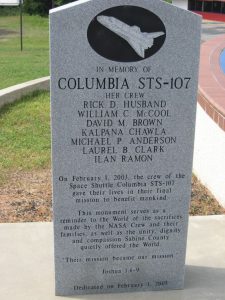
 gratefully received. After a long, drawn-out search, the teams had found all the seemed to be going to find, and almost as quickly as they had arrived, the teams were gone, and the small town of Hemphill, Texas was quiet again, but it would never be the same again. Three months in 2003 had changed it forever. The people who lived there in that time will never forget what they did back then, and we will never forget what they did. It was an awesome feat of kindness and love for our fellow man.
gratefully received. After a long, drawn-out search, the teams had found all the seemed to be going to find, and almost as quickly as they had arrived, the teams were gone, and the small town of Hemphill, Texas was quiet again, but it would never be the same again. Three months in 2003 had changed it forever. The people who lived there in that time will never forget what they did back then, and we will never forget what they did. It was an awesome feat of kindness and love for our fellow man.
 On January 31, 1917, at the height of World War I, Germany announced that they would renew the use of unrestricted submarine warfare in the Atlantic Ocean. The German torpedo-armed submarines, known as U-Boats, prepared to attack any and all ships operating in the Atlantic, including civilian passenger carriers, which were said to have been sighted in war-zone waters. They were prepared to attack without a second thought, whether they were innocent civilians or not. Unleashing the U-Boats was almost like unleashing terrorists, because the U-Boats were an invisible enemy. Yes, the could be seen, but beneath the surface of the water, they could easily hide in the murky darkness, unleashing their torpedoes to go streaking through the water. The first sign of danger was when the doomed ship watchmen saw the dreaded white streak coming at them through the water. There was no time to take evasive action. The ship could not move that fast, and it could not turn on a dime. They were sitting ducks.
On January 31, 1917, at the height of World War I, Germany announced that they would renew the use of unrestricted submarine warfare in the Atlantic Ocean. The German torpedo-armed submarines, known as U-Boats, prepared to attack any and all ships operating in the Atlantic, including civilian passenger carriers, which were said to have been sighted in war-zone waters. They were prepared to attack without a second thought, whether they were innocent civilians or not. Unleashing the U-Boats was almost like unleashing terrorists, because the U-Boats were an invisible enemy. Yes, the could be seen, but beneath the surface of the water, they could easily hide in the murky darkness, unleashing their torpedoes to go streaking through the water. The first sign of danger was when the doomed ship watchmen saw the dreaded white streak coming at them through the water. There was no time to take evasive action. The ship could not move that fast, and it could not turn on a dime. They were sitting ducks.
The vast majority of people of the United States favored neutrality when it came to World War I. So when the war erupted in 1914, President Woodrow Wilson pledged the stay neutral. The problem was that Britain was one of America’s closest trading partners. That created serious tension between the United States and Germany, when Germany attempted a blockade of the British isles. Several US ships traveling to Britain were damaged or sunk by German mines and, in February 1915, Germany announced unrestricted warfare against all ships, neutral or otherwise, that entered the war zone around Britain. One month later, Germany announced that a German cruiser had sunk the William P. Frye, a private American merchant vessel that was transporting grain to England when it disappeared. President Wilson was outraged, but the German government apologized, calling the attack an unfortunate mistake. That didn’t stop their reign of terror, however. In November they sank an Italian liner without warning, killing 272 people, including 27 Americans. Public opinion concerning the war, and the stand of the United States in it began to change. It was time for the United States to get into World War I.
The Germans were far in advance of other nations when it came to submarines. The U-boat was 214 feet long, carried 35 men and 12 torpedoes, and could travel underwater for two hours at a time. In the first few years of World War I, the U-boats took a terrible toll on Allied shipping. In early May 1915, several New York newspapers had to publish a warning by the German embassy in Washington that Americans traveling on British or Allied ships in war zones did so at their own risk. The announcement was placed on the same page as an advertisement for the imminent sailing of the British-owned Lusitania ocean liner from New York to Liverpool. I’m sure they had hoped that people would heed the warning, but many people boarding the Lusitania either didn’t take notice of the warning or they didn’t see it. On May 7, the Lusitania was torpedoed without warning just off the coast of Ireland. Of the 1,959 passengers, 1,198 were killed, including 128 Americans. The Germans had proven once again that they were ruthless and conniving. Following the sinking of the Lusitania The German government accused the Lusitania was carrying munitions. The US demanded an end to German attacks on unarmed passenger and merchant ships, and full repayment for the loss.
Following the sinking of the Lusitania the German government accused the Lusitania was carrying munitions. The US demanded an end to German attacks on unarmed passenger and merchant ships, and full repayment for the loss. Germany countered with a pledge to see to the safety of passengers before sinking unarmed vessels in August 1915. All that changed by January 1917, when Germany, determined to win its war of attrition against the Allies, announced the resumption of unrestricted warfare. Three days later, the United States broke off diplomatic relations with Germany, who, just hours later sunk the American liner Housatonic. None of the 25 Americans on board were killed and they were picked up by a British steamer.
On February 22, Congress passed a $250 million arms-appropriations bill intended to ready the United States for war. British authorities gave the US ambassador to Britain a copy of what has become known as the “Zimmermann Note,” a coded message from German Foreign Secretary Arthur Zimmermann to Count Johann von Bernstorff, the German ambassador to Mexico. In the telegram, intercepted and deciphered by British intelligence, Zimmermann stated that, in the event of war with the United States, Mexico should be asked to 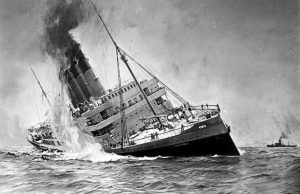 enter the conflict as a German ally. In return, Germany would promise to restore to Mexico the lost territories of Texas, New Mexico and Arizona. On March 1, the outraged US State Department published the note and America was galvanized against Germany once and for all. In late March, Germany sank four more US merchant ships. President Wilson appeared before Congress and called for a declaration of war against Germany on April 2nd. On April 4th, the Senate voted 82 to six to declare war against Germany. Two days later, the House of Representatives endorsed the declaration by a vote of 373 to 50 and America formally entered World War I. They were after that invisible enemy, and they were determined to find it and destroy it.
enter the conflict as a German ally. In return, Germany would promise to restore to Mexico the lost territories of Texas, New Mexico and Arizona. On March 1, the outraged US State Department published the note and America was galvanized against Germany once and for all. In late March, Germany sank four more US merchant ships. President Wilson appeared before Congress and called for a declaration of war against Germany on April 2nd. On April 4th, the Senate voted 82 to six to declare war against Germany. Two days later, the House of Representatives endorsed the declaration by a vote of 373 to 50 and America formally entered World War I. They were after that invisible enemy, and they were determined to find it and destroy it.

